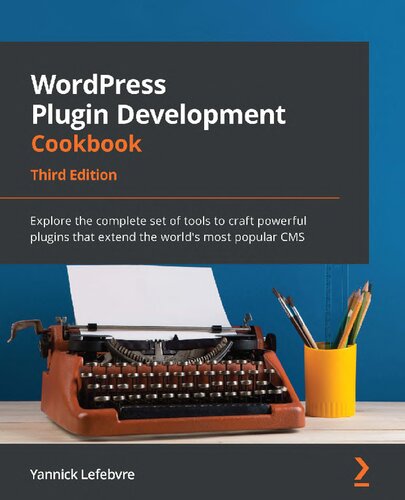

Most ebook files are in PDF format, so you can easily read them using various software such as Foxit Reader or directly on the Google Chrome browser.
Some ebook files are released by publishers in other formats such as .awz, .mobi, .epub, .fb2, etc. You may need to install specific software to read these formats on mobile/PC, such as Calibre.
Please read the tutorial at this link: https://ebookbell.com/faq
We offer FREE conversion to the popular formats you request; however, this may take some time. Therefore, right after payment, please email us, and we will try to provide the service as quickly as possible.
For some exceptional file formats or broken links (if any), please refrain from opening any disputes. Instead, email us first, and we will try to assist within a maximum of 6 hours.
EbookBell Team

4.4
22 reviewsCreate plugins for WordPress through detailed recipes that cover the creation of shortcodes, custom post types, and custom blocks, integrate data from external sources, and do much more with this recipe-based guide
Key FeaturesWordPress is one of the most widely used, powerful, and open content management systems (CMSs). Whether you're a site owner trying to find the right extension, a developer who wants to contribute to the community, or a website developer working to fulfill a client's needs, learning how to extend WordPress' capabilities will help you to unleash its full potential. This book will help you become familiar with API functions to create secure plugins with easy-to-use administration interfaces.
This third edition contains new recipes and up-to-date code samples, including new chapters on creating custom blocks for the block editor and integrating data from external sources. From one chapter to the next, you'll learn how to create plugins of varying complexity, ranging from a few lines of code to complex extensions that provide intricate new capabilities. You'll start by using the basic mechanisms provided in WordPress to create plugins, followed by recipes covering how to design administration panels, enhance the post editor with custom fields, store custom data, and even create custom blocks. You'll safely incorporate dynamic elements into web pages using scripting languages, learn how to integrate data from external sources, and build new widgets that users will be able to add to WordPress sidebars and widget areas.
By the end of this book, you will be able to create WordPress plugins to perform any task you can imagine.